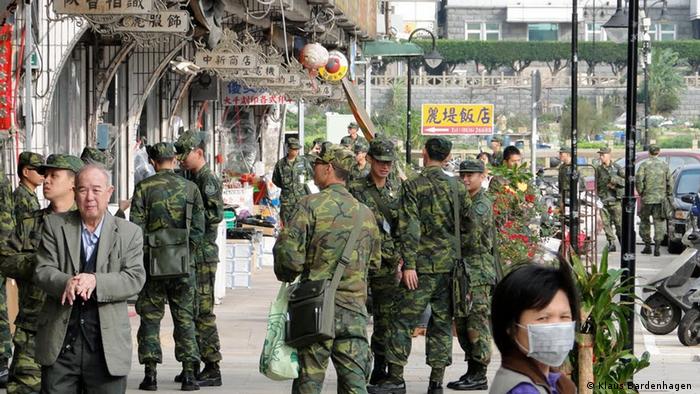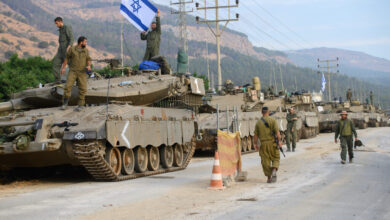Clarified: A course of events of the US battle in Afghanistan

As the United States gets ready to end its longest conflict, here is a course of events of the US’s conflict in Afghanistan.
US President Joe Biden declared Wednesday that he will pull out all leftover battle troops from Afghanistan by September 11, in this manner finishing the longest-running conflict in American history. The expulsion of around 3,000 American soldiers harmonizes with the twentieth commemoration of the 9/11 fear assaults, which started the underlying US attack of Afghanistan.
“The time has come to end America’s longest conflict. It is the ideal opportunity for American soldiers to get back home,” Biden said in a broadcast address. “I’m currently the fourth American president to direct an American troop presence in Afghanistan. Two Republicans. Two Democrats. I won’t pass this obligation to a fifth.”
Over the most recent twenty years, the US military has lost in excess of 2,300 officers, several thousands have been injured, innumerable Afghan lives have been lost and an expected $2 trillion in citizen money has been spent, as indicated by CNN.
As the United States gets ready to end its longest conflict, here is a course of events of the US’s conflict in Afghanistan
September 11, 2001: Al-Qaeda agents captured four business airplane and slammed them into the World Trade Center in New York and the Pentagon in Washington DC. The fourth carrier crash-arrived in a field in Pennsylvania. Almost 3,000 individuals were murdered. Before long, Osama receptacle Laden, the top of the Islamist fear bunch, was recognized as the man behind the assault.
September 18, 2001: Taliban, the territorial Islamic political and military power running Afghanistan, was securing Bin Laden and wouldn’t hand him over to the United States. Accordingly, at that point US President George W Bush endorsed into law the Authorisation for Use of Military Force. According to this law, the nation could utilize power against the countries, associations or people behind the 9/11 assault — specifically the Al-Qaeda and Taliban. Throughout the long term, the AUMF was utilized as the lawful reasoning for the US’ choice to attack Afghanistan, and use power against the Al-Qaeda and its partners, both on and off the front line.
October 7, 2001: American and British powers mutually dispatch assaults on Taliban-controlled Afghanistan. This was the initial salvo in the US’ proposed “battle on fear”. The mission, named ‘Activity Enduring Freedom’, started with a progression of air strikes which figured out how to relax Taliban protections. Following this, various US exceptional powers, Northern Alliance, and ethnic Pashtun against Taliban powers offered help on ground.
November, 2001: Taliban powers started to disintegrate and withdraw from a few of their fortifications the nation over, including Kabul. Sometime thereafter, the UNSC required the development of a temporary organization and welcomed part states to send across peacekeeping powers for looking after dependability. A few Al-Qaeda warriors stayed sequestered from everything in the Tora Bora area of Afghanistan, where they continually competed with hostile to Taliban Afghan powers, which were upheld by the US.
December, 2001: The All-Qaeda started a ceasefire, which numerous currently accept was just a coverup to help Bin Laden and a few other al-Qaeda pioneers escape into Pakistan. At the point when the Tora Bora cavern complex, once occupied by the Al-Qaeda was caught, there was no indication of Bin Laden.
Toward the beginning of December, the UN welcomed various significant Afghan groups to a meeting in Germany, where the Bonn Agreement was agreed upon. The understanding accommodated a worldwide peacekeeping power to keep up security and harmony in Kabul.
On December 9, the Taliban gave up Kandahar and Taliban pioneer Mullah Omar escaped the city. This is broadly considered to have been the finish of the Taliban system in the country. Be that as it may, a few Al-Qaeda pioneers were all the while covering up in the mountains. By December 21, a between time Afghan government was confirmed.
Walk 2, 2002: US-drove alliance powers went head to head with around 800 Al-Qaeda and Taliban warriors in the Shar-I Kot Valley close to the Pakistan line in perhaps the most merciless encounters throughout the entire existence of the US-Afghanistan war. This was additionally around the time the US started redirecting a portion of its military and knowledge assets from Afghanistan to Iraq, which the nation was seeing as a developing danger in its “battle on dread”.
April, 2002: In a discourse conveyed at the Virginia Military Institute, President Bush reported a “Marshall Plan” for Afghanistan. Notwithstanding, improvement endeavors in the nation didn’t get sufficient subsidizing as the US had effectively turned its consideration towards the circumstance in Iraq.
May 1, 2003: The then-US Secretary of Defense Donald Rumsfeld reported a finish to “significant battle” in Afghanistan. Around the same time, President Bush made a comparative declaration about battle activities in Iraq. At that point, there were around 8,000 US troops in Afghanistan.
October 9, 2004: The country’s first fair decisions since the fall of the Taliban was held and around 80% of Afghanistan’s democratic populace cast their voting form for Hamid Karzai, who was filling in as a break chief before the surveys. Parliamentary decisions were directed before long, in which a few ladies applicants were chosen for seats extraordinarily held for them to guarantee sexual orientation variety.
October 29, 2004: Osama Bin Laden delivered a recorded message days after the official political race, in which he ridiculed the Bush organization and asserted obligation regarding the 9/11 assaults.
2005: The year 2005 was set apart by the slow resurgence of the Taliban with brutality expanding the nation over. However, this time they changed their strategies — while they had once occupied with open battle with the US and NATO powers, they were currently falling back on self destruction bombings and utilizing Improvised Explosive Devices (IEDs), bringing about numerous losses.
The arrival of Taliban likewise matched with an expanding hostile to American and Anti-Western feeling among Afghan individuals, who were wrestling with the abrupt ascent in viciousness, combined with boundless debasement inside their administration and reports of detainee maltreatment at US confinement offices.
2006: Cracks started to show up inside the NATO, as some part states competed on troop responsibilities to Afghanistan. At the Riga meeting that year, the collusion’s General Secretary Jaap de Hoop Scheffer said that NATO powers ought to have the option to step by step give up obligation to Afghanistan’s security powers in 2008. He encouraged nations to submit more soldiers with less public limitations meanwhile.
2007: Mullah Obaidullah Akhund, one of the Taliban’s top chiefs, was caught in Pakistan. Months after the fact, the Taliban’s top military officer Mullah Dadullah was killed by US powers.
2009: Then-US President Barack Obama declared that he was expanding military presence in Afghanistan to 68,000 soldiers, following through on one of his key mission guarantees of moving military concentration from Iraq to Afghanistan.
During a two-day NATO gathering in April, part states pledged to send an extra 5,000 soldiers to help train Afghan security powers and give security during the official decisions in August.
In November, Hamid Karzai was confirmed as President for another term following a political race defaced by extortion claims.
2010: The quantity of American conflict passings had crossed the 1,000 imprint by mid 2010. It was around this time, General Stanley McChrystal, who was then the authority of NATO-US powers in Afghanistan, was alleviated of his post after the arrival of a questionable article in the Rolling Stone, in which he and individuals from his staff condemned a few top Obama organization authorities. He was supplanted by General David Petraeus, top of the military’s Central Command.
In November, NATO individuals marked a revelation expressing that they would give up obligation regarding keeping up harmony and security in Afghanistan to Afghan’s own security powers before the finish of 2014.
2011: On May 1, 2011, Bin Laden was executed by US powers in Abbottabad, Pakistan, where he was covering up with a portion of his relatives. He was covered in the Northern Arabian Sea that very day.
By June, Obama reported his arrangements to pull out 30,000 soldiers by 2012. At that point, Obama was confronting overpowering pressing factor from the American public, who were to a great extent against the conflict in Afghanistan, according to surveys.
In September, previous Afghan president Burhanuddin Rabbani, a focal figure in compromise exchanges, was killed in a self destruction bombarding episode.
2012: Tensions started to ascend between the US and Afghan government after a video showing Marines peeing on dead Afghans surfaced via web-based media. In practically no time, fights broke out after reports recommended that US officers had consumed duplicates of the Quran at an army installation.
In March, a US fighter purportedly broke into a few homes close to Panjwai, shooting dead 17 Afghan locals, a larger part of whom were kids and ladies. Days after the fact, the Taliban suspended talks with the US and the Afghan government.
2013: NATO gave over control of safety to Afghan powers. All things being equal, the alliance focussed on military preparing and counter-psychological warfare around there. In the interim, the Taliban and US authorities continued talks in Doha, Qatar.
2014: President Obama uncovered his arrangement for pulling out US troops from Afghanistan before the finish of 2016.
In September, Ashraf Ghani was chosen president after a protracted postpone following the official political decision. He consented to the Bilateral Security Arrangement, which Karzai had recently wouldn’t sign towards the finish of his administration, which allowed around 13,000 unfamiliar soldiers to stay in the country.
On December 28, the US and NATO officially finished their battle mission in Afghanistan.
2017: The US dropped a huge GBU-43 bomb, named the “mother, all things considered”, in eastern Afghanistan, focusing on a progression of caverns involved by Islamic State assailants. This was the first run through the nation utilized a bomb of this size in struggle. The bomb hit a “burrow complex” in the Achin locale of the Nangarhar area, near Afghanistan’s boundary with Pakistan.
In August, previous President Donald Trump illustrated another procedure for settling the contention in Afghanistan in a broadcast discourse to troops at Fort Myer army installation in Virginia. “My unique intuition was to pull out, and generally I like after my impulses,” Trump said. “Yet, for my entire life, I’ve heard that choices are vastly different when you sit behind the work area in the Oval Office.”
He welcomed India to assume a larger part in reestablishing harmony in Afghanistan, while censuring Pakistan for holding Taliban powers.
2019: The US inclines up harmony exchanges with the Taliban in Doha. Taliban authorities pledged to obstruct International fear based oppressor bunches from Afghanistan in return for the US pulling out its soldiers.
In September, Trump suddenly canceled harmony talks only seven days after the US’ Ambassador to Afghanistan Zalmay Khalilzad declared he had handled an understanding “on a basic level” with Taliban pioneers. Trump guaranteed his choice was started by the new murdering of a US trooper by Taliban contenders.
2020: The US and Taliban consented to an arrangement, preparing for unfamiliar soldiers to be altogether removed from Afghanistan. However, without a truce, Taliban contenders dispatched a progression of assaults on Afghan security powers in the days that followed. Accordingly, the US dispatched an airstrike against the Taliban powers positioned in the Helmand area.
In November, US Defense Secretary Christopher C Miller reported designs to divide troops to 2,500 by January. Following the US-Taliban understanding, a huge number of troops had effectively been removed.
2021: President Joe Biden reported that the US won’t fulfill the May 1 time constraint for pulling out troops set down in the US-Taliban arrangement. All things being equal, troops will withdraw totally by September 11, 2021, he said.





